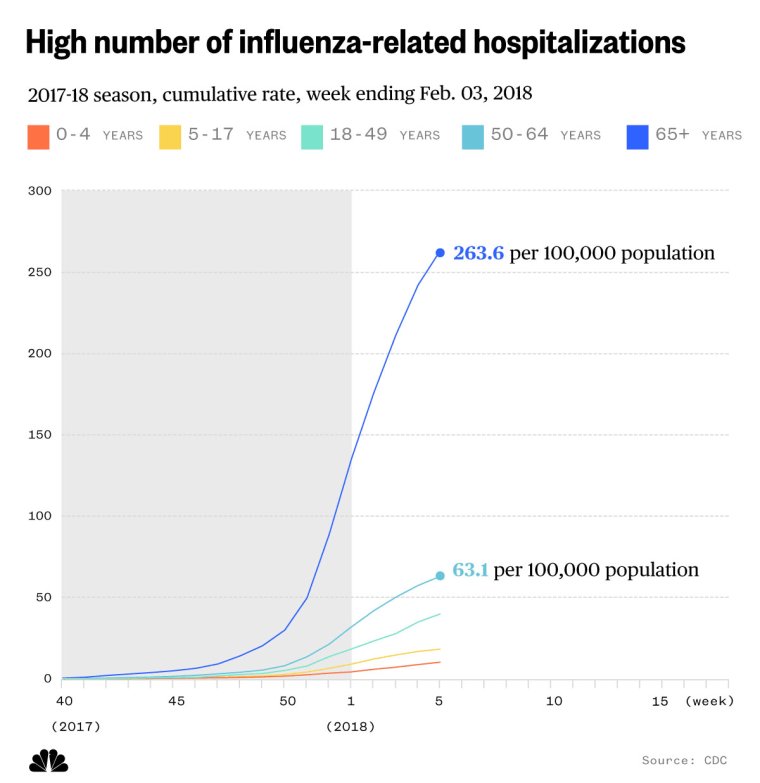The flu season is still a bad one and it’s broken a few recent records, federal health officials said Friday.
It’s not time to panic about a new pandemic — it is simply a relatively severe flu season, one that’s hitting the whole country at once instead of in waves, the Centers for Disease Control and Prevention says.
“Influenza activity is still on the rise overall,” CDC’s acting director, Dr. Anne Schuchat, told reporters.
Ten more children have been reported to have died from flu, bringing the total for the season so far to 63.
Last season, 110 children died from flu in the U.S.
Every year, influenza kills between 12,000 and 49,000 people and can send more than 700,000 people to the hospital, the CDC says. It affects so many people that adult cases and deaths can only be estimated.
“This is a difficult season and we can’t predict how much longer the intense flu activity will last,” Schuchat said.
“This season, we are on track to break some recent records.”
For one, hospitalizations are the highest they’ve been since the CDC started a new way of measuring them in 2010. And while flu usually hits people over 65 the hardest, the CDC says it’s seeing more people aged 50 to 64 being hospitalized.
And more people are showing up with flu-like symptoms — 7.7 percent of all doctor visits, which hasn’t been seen since 2003-2004, with the exception of the H1N1 “swine flu” pandemic in 2009.

With that many hospitalizations there are sure to be deaths, Schuchat said.
“We usually see the increases in influenza-like illness and hospitalizations a couple of weeks before we see what's going on with influenza deaths,” she said.
“People may have lengthy hospitalizations before they finally die of flu,” she added.
“Almost everything we are looking at is bad news.”
Most of the sickness is due to H3N2 influenza, which is notorious for causing more severe disease. Schuchat said there is no indication that the strain has mutated in some way to make it worse than usual, but scientists are looking to make sure there isn’t something unusual about it.
“This season, we are on track to break some recent records.”
And now, some states in the west are seeing a second wave of illness caused by influenza B, she said.
At any given time, several different strains of flu will be circulating and this year the four major strains that are include H3N2, H1N1 and two different strains of influenza B. Vaccines protect against three or four strains and Schuchat said it is still not too late to get a vaccine.
People who have had flu once can get sick again from a second strain, and people who have already had flu might protect themselves from catching it again if they get vaccinated, she said.
There is some good news. There is still plenty of medication to go around, Schuchat said, even though some pharmacies may not have enough in stock.
People at high risk of flu complications, such as the very young, the very old, people with asthma, diabetes or other conditions should not wait. If it looks like flu, it probably is, Schuchat said, and taking medication early in its course can make the difference between a mild bout of flu and going to the hospital.
“We do want clinicians to know that if a person looks like they have flu, don’t wait for the tests results,” she advised.
